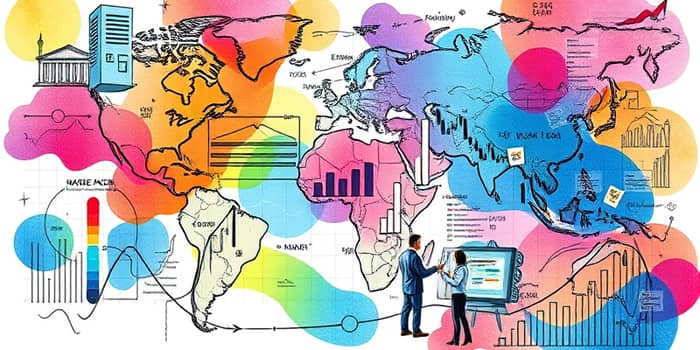
In today's interconnected financial world, understanding derivatives is vital. This comprehensive exploration examines their mechanics, market roles, global reach, and potential pitfalls. Whether you are a seasoned professional or an emerging investor, these insights will sharpen your perspective on one of the most influential asset classes.
A derivative is a financial contract whose value depends on an underlying asset or group of assets, such as stocks, bonds, interest rates, currencies, commodities, and even cryptocurrencies. These contracts can grant the right, without the obligation, to buy or sell at a predetermined price within a specific timeframe.
Traders and institutions rely on derivatives for a variety of strategic objectives. Through risk management and hedging strategies, they can shield portfolios against adverse price movements. Speculators seek profit from directional bets, while others generate income or diversify their holdings.
Derivatives come in several standardized forms, each serving unique functions. Understanding their distinctions is essential for proper application and risk assessment.
Beyond these basics, structured products blend multiple derivative features into tailor-made financial solutions, and warrants provide company-issued rights to purchase stock at specified prices.
Derivatives trade across diverse asset classes on exchanges and in over-the-counter venues. Key segments include equity, currency, fixed income, and credit derivatives.
For example, daily volume on Korea’s KOSPI 200 options and futures rose from 0.9 million contracts in 2000 to 4.7 million in 2002, highlighting exponential growth in emerging markets.
The global derivatives market is colossal, with notional values often cited in the quadrillions. In 2021, total notional exceeded $600 trillion, while net real value stood at approximately $12.4 trillion. These figures underscore the systemic importance of notional values and the need for rigorous oversight.
Despite the mind-boggling headline numbers, the actual funds exchanged—such as interest payments or settlements—are far smaller. However, the aggregated exposure poses potential systemic risks if left unchecked.
Derivatives trade in two primary venues: formal exchanges and the OTC market. Exchange-traded derivatives (ETDs) offer standardized contracts, transparent pricing, and clearing-house guarantees. In contrast, OTC derivatives are customized, negotiated directly between parties, and carry higher counterparty risk.
In the mid-2000s, quarterly global turnover for ETDs soared from $344 trillion in Q4 2005 to $681 trillion by 2007, reflecting the market’s rapid expansion before regulatory reforms tightened oversight.
While derivatives facilitate sophisticated strategies, they introduce unique vulnerabilities. Investors must remain vigilant and informed to avoid unintended outcomes.
Historical crises, such as the 2008 financial meltdown, underscore how hidden exposures in credit default swaps can ripple across the global system.
Derivatives underpin crucial functions in today’s capital markets. They enable efficient price discovery by reflecting collective expectations about future asset values. Market participants use them to allocate capital where it can generate optimal returns relative to risk.
Through strategies like covered writing and volatility trading, investors can generate additional income streams, while arbitrageurs capitalize on pricing discrepancies across venues and products.
As capital flows transcend borders, derivative markets evolve to meet global demand. Emerging exchanges in Asia, South America, and Africa now rival established hubs, while retail investors increasingly access products such as leveraged ETFs and exchange-traded options.
Continuous innovation in structured and synthetic instruments addresses the shifting needs of clients seeking diversified global exposures or customized risk allocations.
Case studies illustrate both the power and peril of derivatives. The collapse of Long-Term Capital Management in 1998 and the 2008 credit crisis reveal the dangers of excessive leverage and opaque risk concentration in credit derivatives.
Major players like CME Group, Eurex, and Korea Exchange compete on product breadth, technology infrastructure, and client services. Institutions leverage quantitative and qualitative research to benchmark offerings, optimize fee structures, and differentiate in a crowded market.
Post-crisis reforms introduced measures to reduce systemic risk, including centralized clearing mandates, margin requirements, and enhanced reporting for OTC trades. Regulatory bodies continue to debate the adequacy of oversight, striving to balance market innovation with financial stability.
By adhering to best practices in governance, transparency, and risk management, market participants can harness the benefits of derivatives while mitigating potential threats to the broader economy.
References













